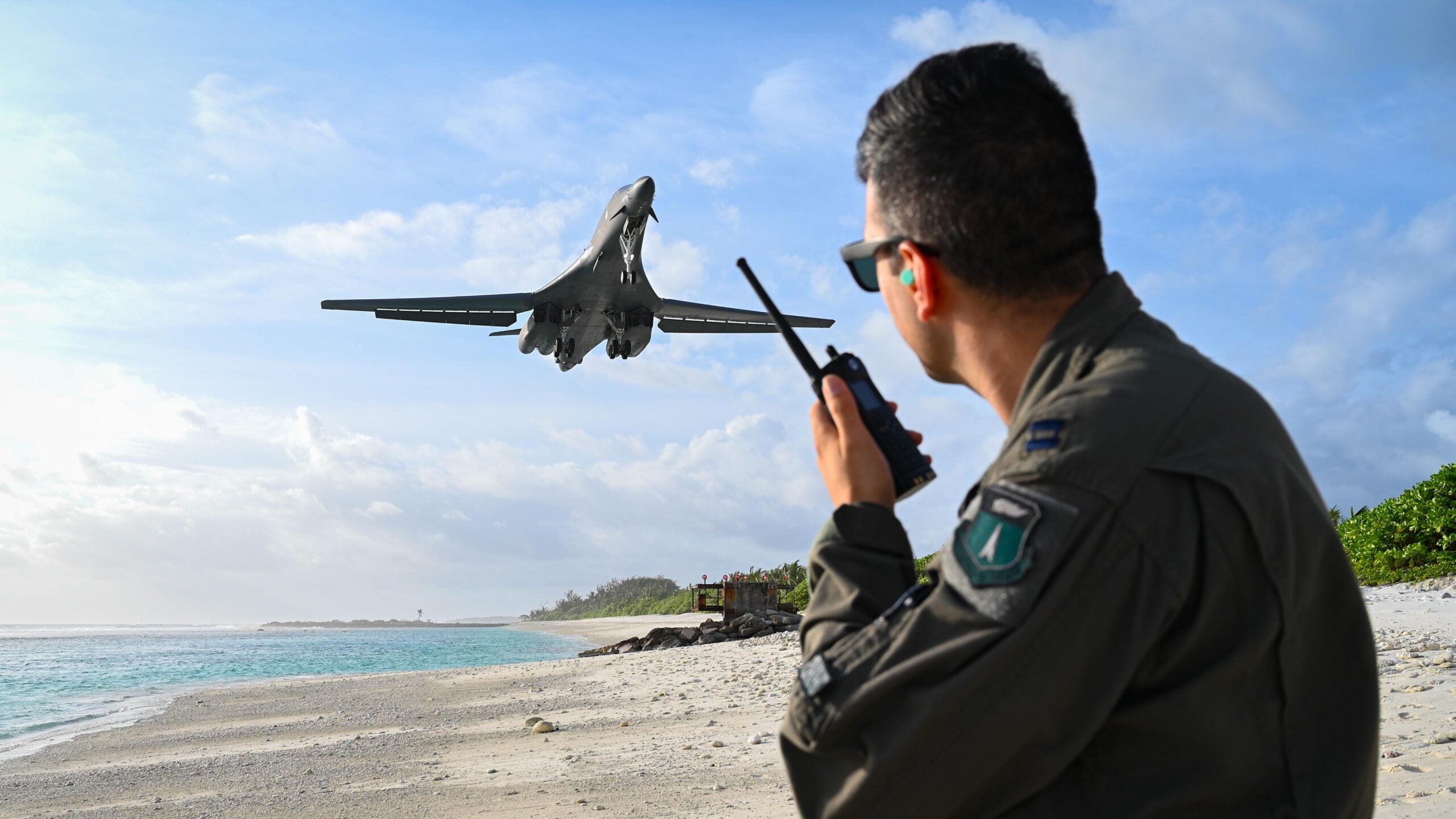B-1B Lancer strategic bombers from the U.S. Air Force are back at the remote island outpost of Diego Garcia in the Indian Ocean, for the first time since 2006. The ‘Bones’ were sent halfway around the world to the remote airfield for a Pacific Air Forces (PACAF) Bomber Task Force (BTF) mission, part of a relatively new strategy of unpredictable bomber deployments the service has implemented. They arrive at a time when tensions in the wider Asia-Pacific region are at a high, including as a result of significant Chinese activity in the Taiwan Strait.
The Pentagon announced the deployment of the B-1s and around 200 airmen to Naval Support Facility Diego Garcia, part of America’s sprawling military outpost in the British Indian Ocean Territory, yesterday. The bombers and crews are from the 28th Bomb Wing at Ellsworth Air Force Base, South Dakota.
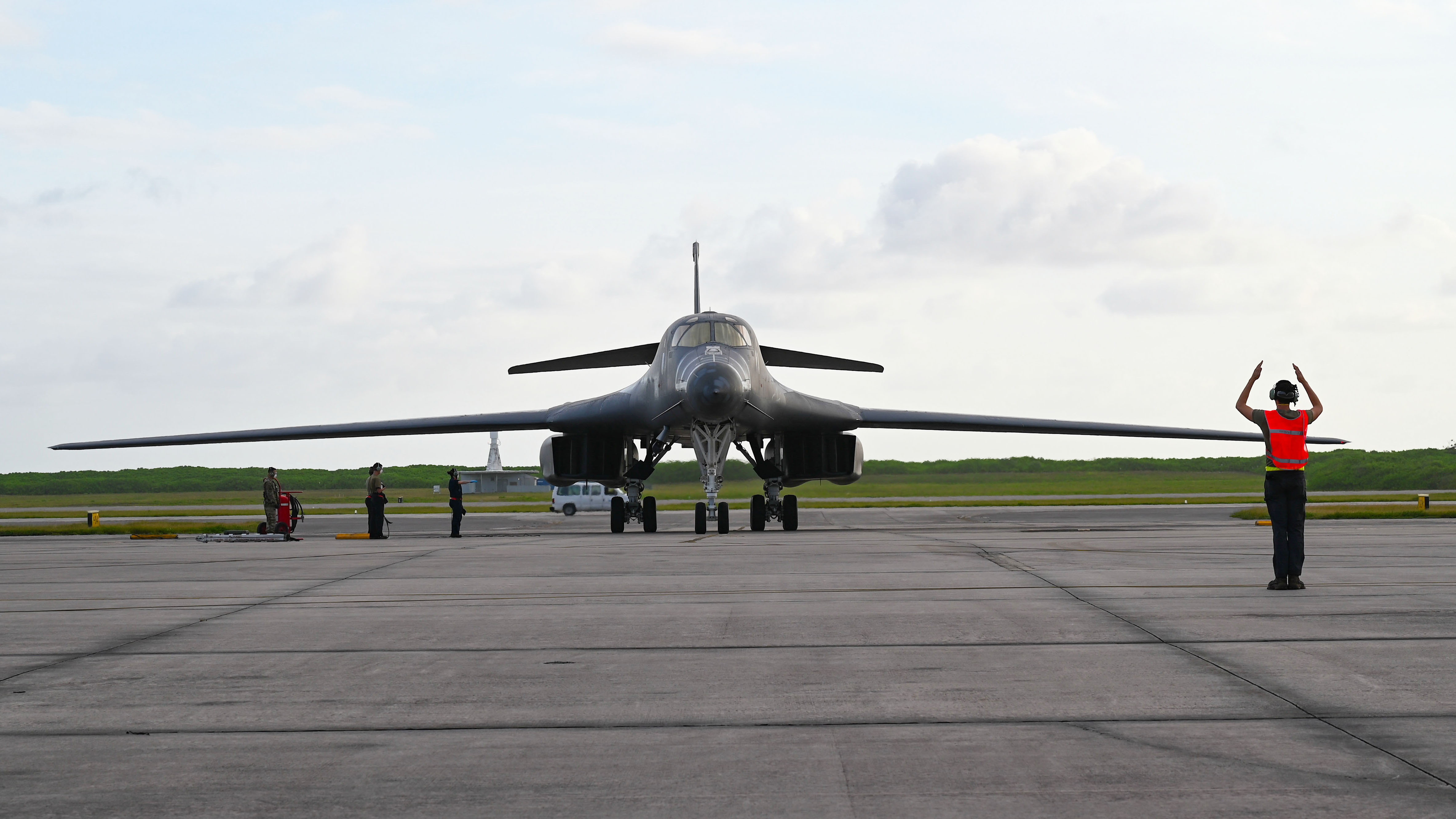
Although the Department of Defense has not cited the number of bombers at the island base, satellite imagery obtained by The War Zone shows three B-1s on the airfield as of October 18 and on October 21.
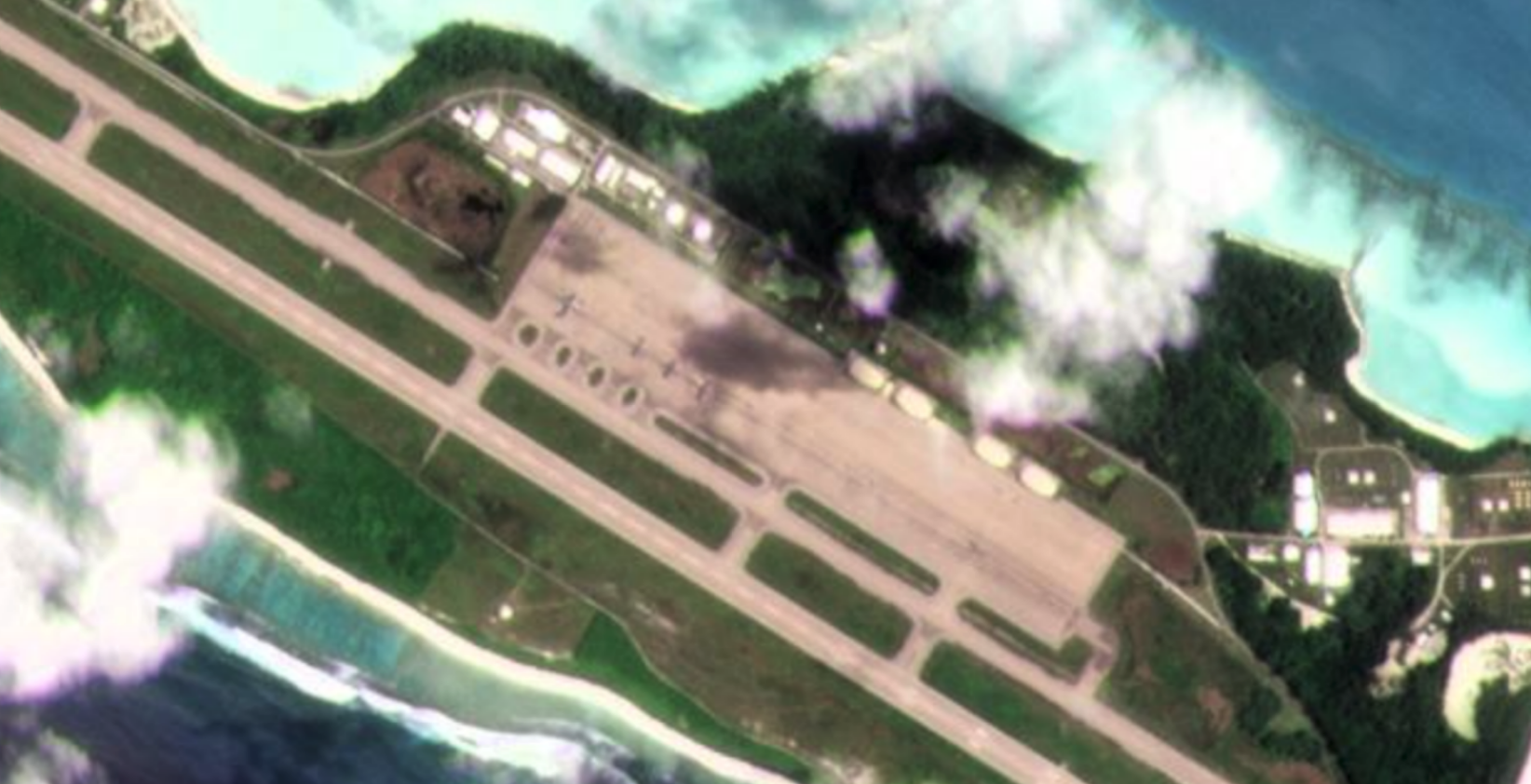
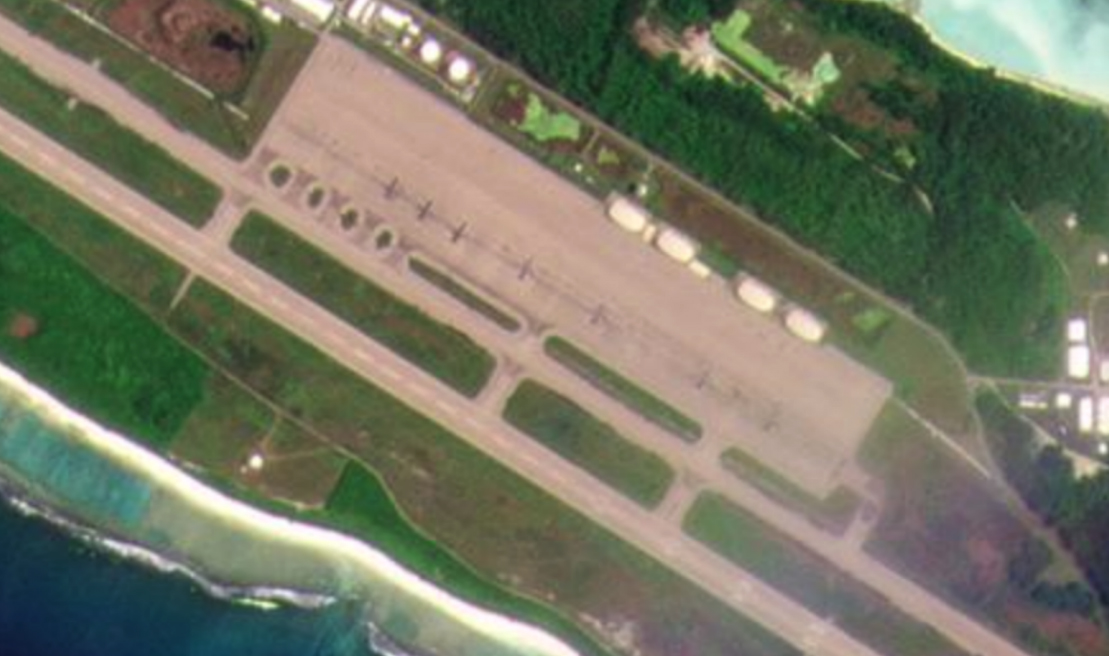
The B-1s arrived at Diego Garcia on October 17, based on captions for the imagery released by the DoD, while supporting flights by C-17A Globemaster III transports were carried out last week, moving 426,000 pounds and 90 items of materiel in the course of five shipments.
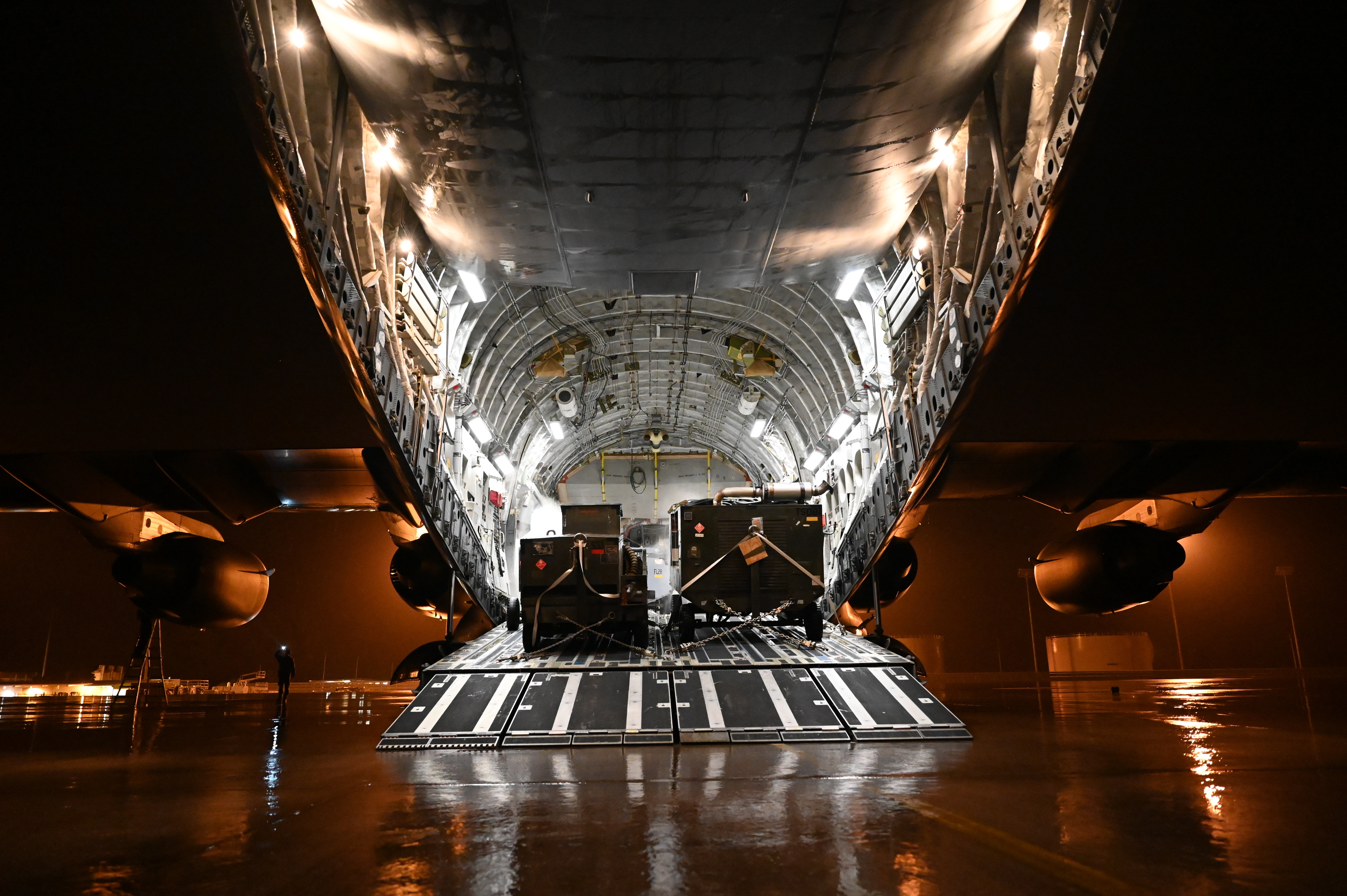
As already noted, the last time that B-1s were at Diego Garcia was in 2006. That deployment included an accident on May 6 of that year, in which one of the bombers, serial number 86-0132, sustained serious damage when it made a wheels-up landing. B-1s, as well as B-52s, and, to a lesser extent, B-2 stealth bombers, all made use of Diego Garcia for strikes in Afghanistan during the first decade of the Global War On Terror, before for bomber operations were moved closer to the action at bases in the Middle East.
“Bomber Task Force missions, in support of [U.S. Indo-Pacific Command’s] operational and strategic objectives, are extremely valuable to our aircrew because of the multi-country integration opportunities,” said Lieutenant Colonel Ross Hobbs, 37th Bomb Squadron director of operations, in a statement released by the DoD regarding this new B-1 deployment to Diego Garcia. “They also give us the opportunity to showcase the unmatched range, speed, and lethality of the B-1.”
“Global B-1 operations not only provide strategic deterrence to our nation’s adversaries but also strong, palpable assurance to our allies,” added Hobbs.
The planned length of the deployment and the types of missions the B-1s will fly from Diego Garcia have not been revealed, although the Pentagon promises “multiple sorties […] in support of multiple geographic combatant command objectives and training requirements.” Typically, BTF missions are billed as a way of demonstrating U.S. military commitment to its allies and partners in particular regions. Currently, B-1s are also deployed to RAF Fairford in England as part of a BTF mission in the European theater, which has so far involved long-range missions over the Black Sea, an area that’s seen recent tensions between NATO and Russia.
The arrival of the B-1s on Diego Garcia does come amid a significant uptick in American and allied activity across the Pacific, including high-profile multinational exercises and the debut operational deployment by the British aircraft carrier HMS Queen Elizabeth and its task group, Carrier Strike Group 21 (CSG21). Meanwhile, the People’s Liberation Army Air Force has been especially active in and around the Taiwan Strait recently, with a record-setting 56 PLA aircraft entering Taiwan’s Air Defense Identification Zone, or ADIZ, on one day alone earlier this month.
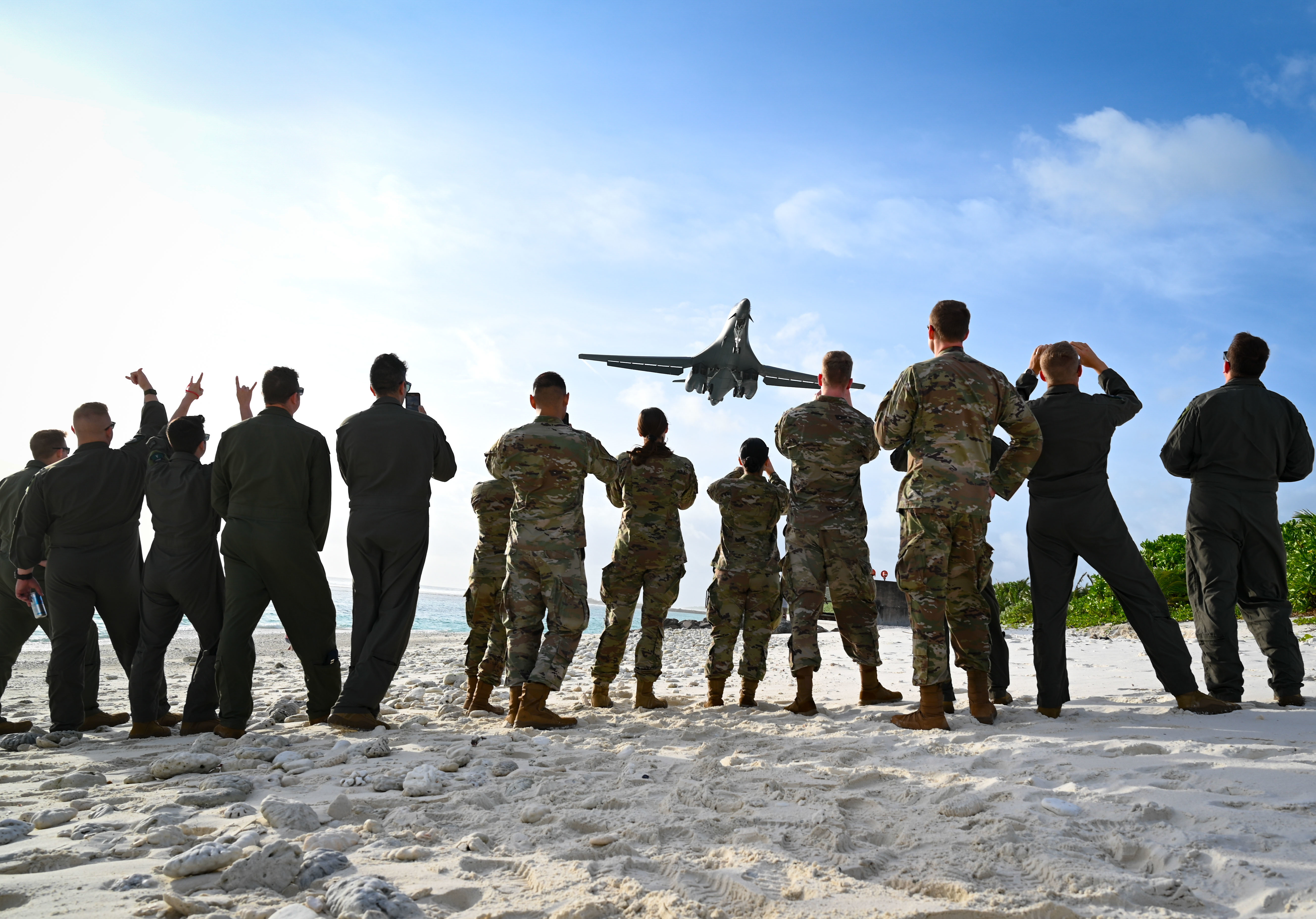
While the B-1 has long been absent from Diego Garcia, in the meantime it has hosted other bomber types during BTF missions in recent years that have been related to increased geopolitical friction. In August last year, for example, it was the turn of three B-2s to deploy there, in a mission that seemed to be timed to coincide with a spike in tensions with China. You can read all about that deployment in this previous article.
On that last occasion, the B-2s conducted simultaneous training missions with B-1s, although these latter were flown directly from Dyess Air Force Base, Texas, to the Pacific and back without ever touching down in the region. Other B-1s flying from Andersen Air Force Base on Guam, which regularly hosts Pacific BTF missions, were involved, as well.
On a separate occasion during that deployment, one of the B-2s also conducted a sortie from Diego Garcia that appeared to take it to the Delamere Air Weapons Range in Australia. Cooperation with Australia may also be a feature of the B-1 deployment, reflecting the broader efforts to integrate more with key allies and partners in the Indo-Pacific to deter China and otherwise respond to regional security challenges. That same thinking has also helped drive the recent AUKUS initiative, which stands for Australia-United Kingdom-United States, and which includes cooperation in areas including nuclear-powered submarines, long-range strike capabilities, cyber warfare, artificial intelligence, and quantum computing.
The last time B-2s were at Diego Garcia they made use of a new mobile operations center. This readily deployable command post is an essential component of new expeditionary concepts of operations for the stealth bombers, expanding the number of operating locations available to them. It could also be the case that the command post will benefit the B-1, further enabling the kinds of short-notice deployments to austere locations that are becoming increasingly relevant to the U.S. strategy in the Pacific.
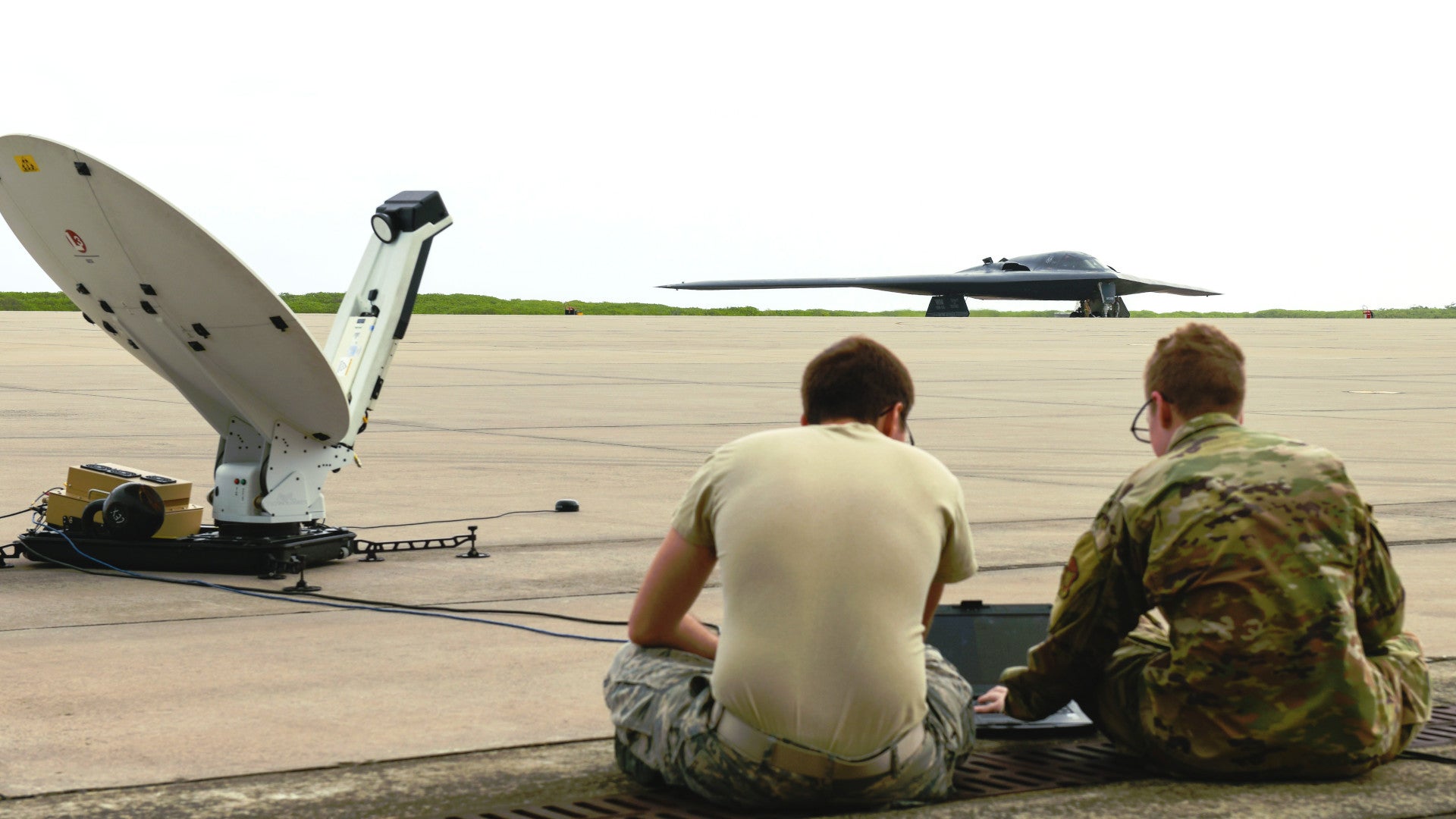
Earlier in 2020, Diego Garcia played host to six B-52 Stratofortress bombers. As we observed at the time, the basing decision looked to have been made, at least in part, to put the aircraft beyond the reach of Iran’s ballistic missiles, as tensions with that country flared during the final weeks of the Trump administration.
Although the Air Force is preparing for a future without the B-1, and recently retired 17 examples, the type is still due to receive various upgrades, including the integration of new weapons capabilities, such as the ability to carry conventional standoff missiles and hypersonic weapons on new external pylons. As such, it remains an important strategic asset. Famously, the ‘Bone’ carries the largest conventional weapons payload of any aircraft in the Air Force. Included among this is the AGM-158C Long-Range Anti-Ship Missile, or LRASM, which provides a potent anti-ship capability that has particular resonance as a counter to the growing PLA Navy in the Pacific.
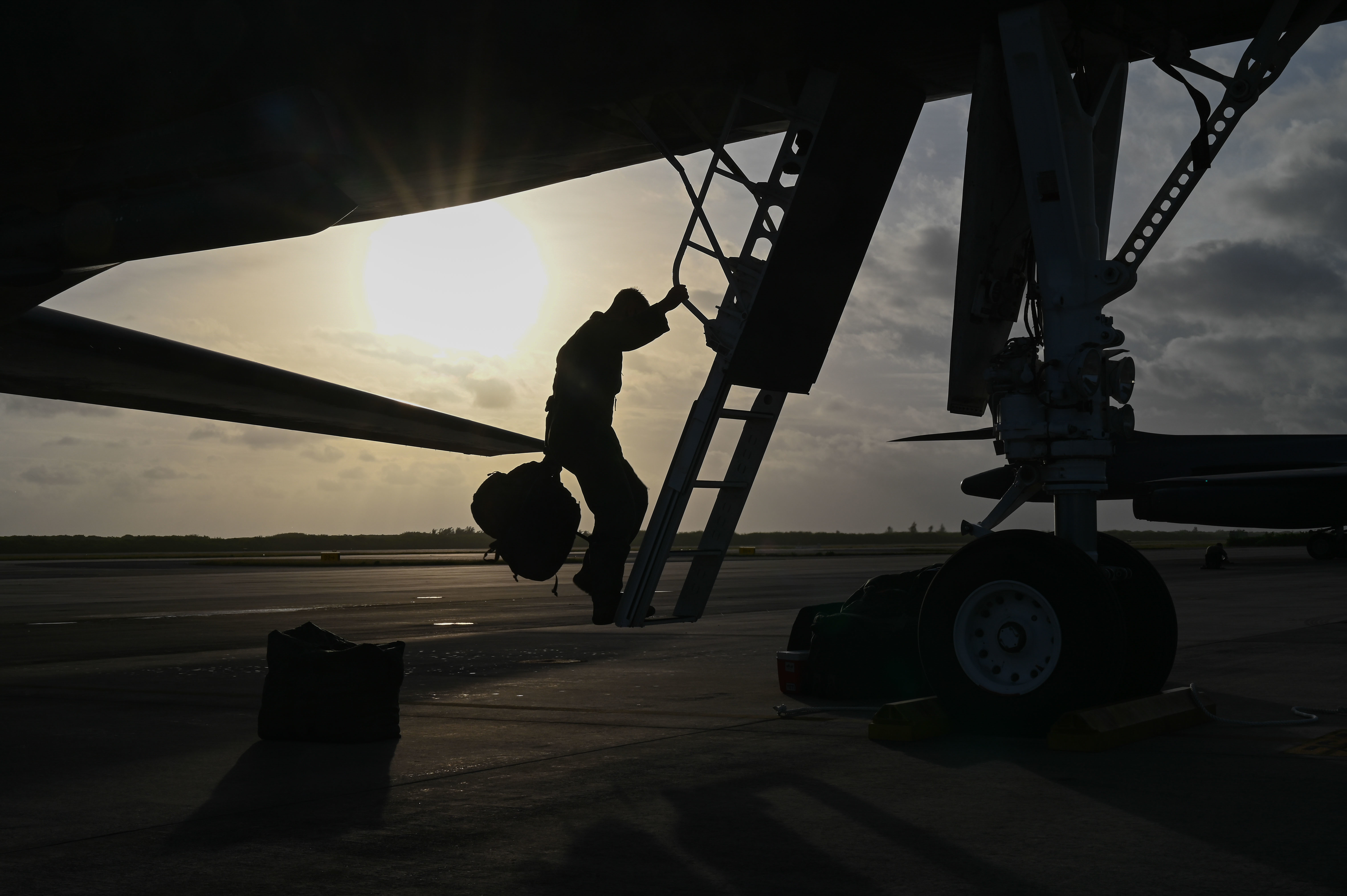
With that in mind, the B-1’s return to the Pacific could be part of a larger effort to not only send a message to the regimes in Beijing and Pyongyang but also assure American allies and partners in the region.
We don’t know for how long the B-1s will be operating out of Diego Garcia but it’s likely the Air Force will again seek to demonstrate the aircraft’s long-range capabilities across the Indo-Pacific region. At the same time, Diego Garcia’s strategic location not only gives the ‘Bones’ the option to exercise alongside various friendly regional powers but also places them firmly within reach of various potential hotspots, too.
Contact the author: thomas@thedrive.com
